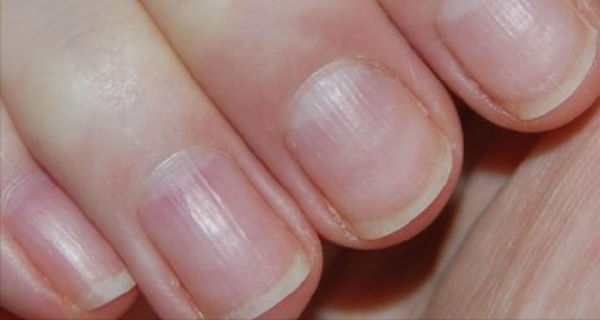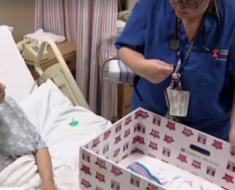Don’t rely on routine tests alone to protect you from cancer. It’s just as important to listen to your body and notice anything that’s different, odd, or unexplainable.
HERE ARE SOME SIGNS THAT ARE COMMONLY OVERLOOKED:
1. Wheezing or shortness of breath
One of the first signs many lung cancer patients remember noticing is the inability to catch their breath.
2. Chronic cough or chest pain
Several types of cancer, including leukemia and lung tumors, can cause symptoms that mimic a bad cough or bronchitis. Some lung cancer patients report chest pain that extends up into the shoulder or down the arm.
3. Frequent fevers or infections
These can be signs of leukemia, a cancer of the blood cells that starts in the bone marrow. Leukemia causes the marrow to produce abnormal white blood cells, sapping your body’s infection-fighting capabilities.
4. Difficulty swallowing
Trouble swallowing is most commonly associated with esophageal or throat cancer, and is sometimes one of the first signs of lung cancer, too.
5. Swollen lymph nodes or lumps on the neck, underarm, or groin
Enlarged lymph nodes indicate changes in the lymphatic system, which can be a sign of cancer.
6. Excessive bruising or bleeding that doesn’t stop
This symptom usually suggests something abnormal happening with the platelets and red blood cells, which can be a sign of leukemia. Over time, leukemia cells crowd out red blood cells and platelets, impairing your blood’s ability to carry oxygen and clot.
7. Weakness and fatigue
Generalized fatigue and weakness is a symptom of so many different kinds of cancer that you’ll need to look at it in combination with other symptoms. But any time you feel exhausted without explanation and it doesn’t respond to getting more sleep, talk to your doctor.
8. Bloating or abdominal weight gain
Women diagnosed with ovarian cancer overwhelmingly report unexplained abdominal bloating that came on fairly suddenly and continued on and off over a long period of time.
9. Feeling full and unable to eat
This is another tip-off to ovarian cancer; women say they have no appetite and can’t eat, even when they haven’t eaten for some time.
10. Pelvic or abdominal pain
Pain and cramping in the pelvis and abdomen can go hand in hand with the bloating that often signals ovarian cancer. Leukemia can also cause abdominal pain resulting from an enlarged spleen.
11. Rectal bleeding or blood in stool
This is a common result of diagnosing colorectal cancer. Blood in the toilet alone is reason to call your doctor and schedule a colonoscopy.
12. Unexplained weight loss
Weight loss is an early sign of colon and other digestive cancers; it’s also a sign of cancer that’s spread to the liver, affecting your appetite and the ability of your body to rid itself of wastes.
13. Upset stomach or stomachache
Stomach cramps or frequent upset stomachs may indicate colorectal cancer.
14. A red, sore, or swollen breast
These symptoms can indicate inflammatory breast cancer. Call your doctor about any unexplained changes to your breasts.
15. Nipple changes
One of the most common changes women remember noticing before being diagnosed with breast cancer is a nipple that began to appear flattened, inverted, or turned sideways.
16. Unusually heavy or painful periods or bleeding between periods
Many women report this as the tip-off to endometrial or uterine cancer. Ask for a transvaginal ultrasound if you suspect something more than routine heavy periods.
17. Swelling of facial features
Some patients with lung cancer report noticing puffiness, swelling, or redness in the face. Small cell lung tumors commonly block blood vessels in the chest, preventing blood from flowing freely from your head and face.
18. A sore or skin lump that doesn’t heal, becomes crusty, or bleeds easily
Familiarize yourself with the different types of skin cancer — melanoma, basal cell carcinoma, and squamous cell carcinoma — and be vigilant about checking skin all over your body for odd-looking growths or spots.
19. Changes in nails
Unexplained changes to the fingernails can be a sign of several types of cancer. A brown or black streak or dot under the nail can indicate skin cancer, while newly discovered “clubbing”– enlargement of the ends of the fingers with nails that curve down over the tips — can be a sign of lung cancer. Pale or white nails can sometimes be a sign of liver cancer.
20. Pain in the back or lower right side
Many cancer patients say this was the first sign of liver cancer. Breast cancer is also often diagnosed via back pain, which can occur when a breast tumor presses backward into the chest, or when the cancer spreads to the spine or ribs.
Whether you are a man or a woman, it’s important to watch for any unusual changes in your body and energy levels in order to detect any signs of cancer early on. The sooner you notice there’s a problem, the sooner you can begin to take the steps necessary to promote healing within your body.
Of course, ideally you should follow an anti-cancer lifestyle even before you notice any symptoms, as prevention is the best route when it comes to most chronic diseases. It is not unusual for 10 or more years to pass between exposure to a cancer-causing agent (tobacco, chemicals, radiation, cell phones, poor nutrition, etc.) and detectable cancer.
So during this time you have a chance to alter the progression of the disease.
Cancer is actually a group of diseases characterized by uncontrolled growth and spread of abnormal cells. The “cure” lies in controlling this abnormal growth and stopping the spread.
Your body has a remarkable capacity to do just that — to heal — and that ability is fueled largely by your lifestyle. If you eat well, exercise, get enough sleep and sun exposure and address your emotional stress, your body should be able to maintain a healthy balance.
The problem with cancer often lies not only with ignoring these health principles but also with the invasive and highly risky treatments that conventional medicine relies on to treat it — surgery, chemotherapy and radiation.






